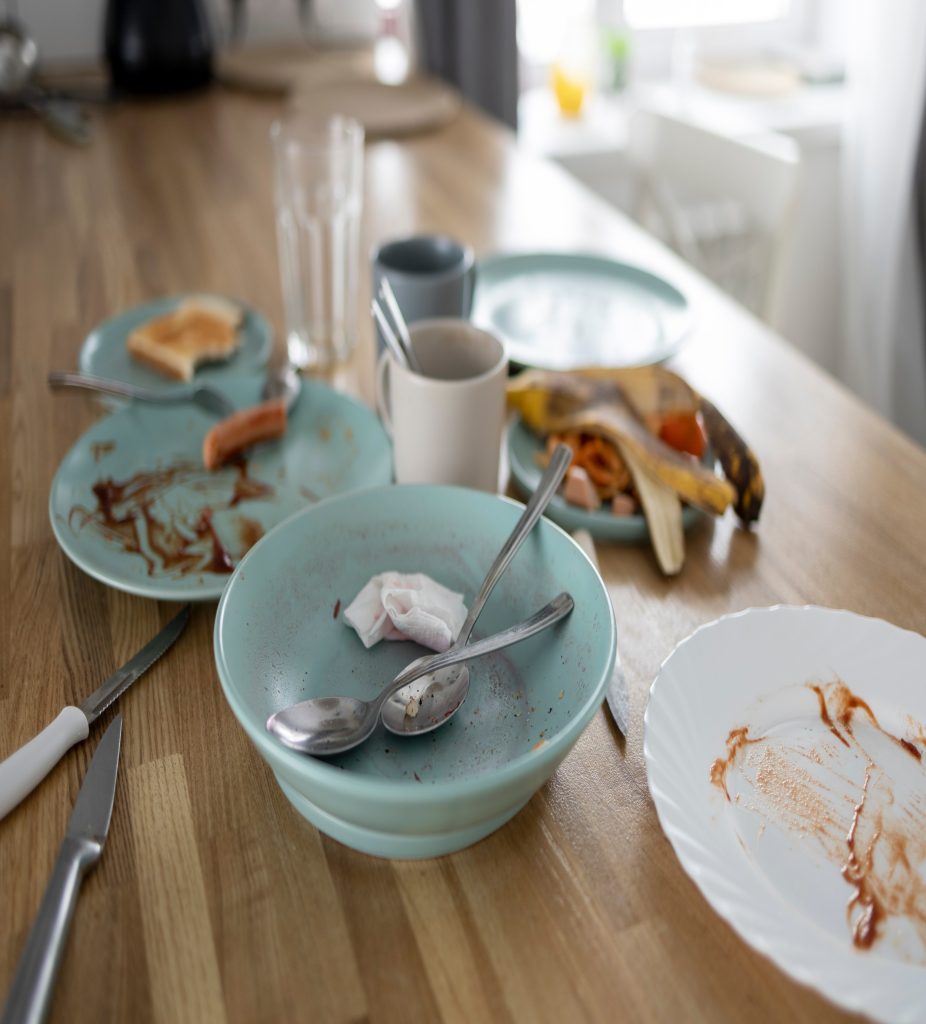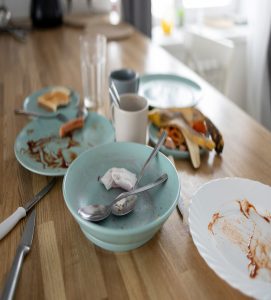
There’s Nothing worse than a half-done job. It’s like why bother when you could have just left it and not done anything at all. This is how most people feel when another person doesn’t wash plates properly. In some families, it leads to a lot of conflict. It’s almost embarrassing to wash plates and it’s still very greasy. It’s even more embarrassing when you try to give an explanation.
Here we will be discussing the steps to make really greasy plates spick and span
Why are Greasy Plates Hard to wash
There are a lot of reasons greasy plates are difficult to wash. Some of these reasons include :
1) Ineffective Amount of Dish wash:
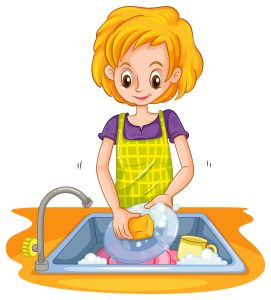
When washing plates, adding an adequate amount of soap or dish wash is important. This isn’t an excuse to be wasteful but a good amount of dishwasher is required to wash off the oil.
Soaps contain a surfactant and emulsifier called Sodium Laureth Sulfate. It is what helps the soap to foam and it removes oils. These surfactants have both polar and nonpolar parts of them. What this means is that it interacts well with both water and oils. So when adequate amounts are used, it works more effectively.
2) Temperature of the water:
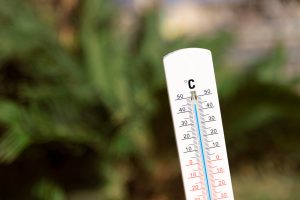
It’s not news that water and oil are like black and white. They are on opposite ends of the poles and have zero affinity for each other(simply put, they hate each other). The only time this is reversed or minimized is when the water is at a higher temperature. When hot water is applied to an oily substance it is able to break the bonds of the oily substance and penetrate it as opposed to cold water that would just run off the substance.
3) Water Type: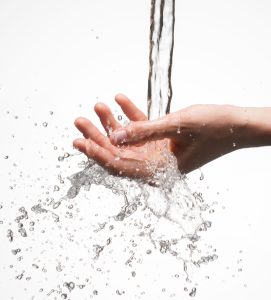
Back in school, I’m sure 80 percent of us were taught about hard and soft water but not everyone really understood that concept, what it was about and why it even mattered. Let me break it down for you. Hard water contains minerals that soft water doesn’t have. And these minerals make it difficult for soaps to foam with later. This means that the type of water used can reduce the effectiveness of the liquid wash being used and this means the plate would remain greasy.
Importance of Properly Washing Greasy plates
When plates are still greasy, it is easier for microorganisms and other particles to build up on it. This is detrimental to the health of the individual who uses the plate later on.
These are the reasons your greasy plates should be spick and span.
-
Health Conditions:
Greasy plates that aren’t washed properly can be a serious threat to the health of the individual. It encourages mold buildup or rather it promotes an almost sticky interface that allows microorganism buildup that is later consumed by the individual. This can lead to gastrointestinal tract diseases like gastritis, and irritable bowel syndrome.
-
Hygiene :
When plates are washed properly, it shows the individual has good hygiene practices. This isn’t to throw shades at you if you don’t know how to yet. The fact that you’re learning how you can wash your greasy plates to be clean shows your hygiene levels are off the charts.
I hope I speak for everyone when I say, no one likes to be seen as dirty or a slob. It doesn’t speak well of your reputation.
Steps to Take to Wash Greasy Plates Effectively
-
Gather the Necessary Materials:
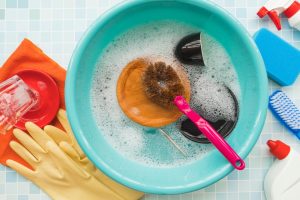
Ensure the liquid soap, sponge, scrubbing materials and the hot or warm water is readily available before you begin.
-
Scrape off the Excesses:

Don’t just put some soap and dip the sponge into the greasy plate, scraping off excesses of the food should be one of the first steps to washing plates. Scrape off into a waste bin. This is really important if a dishwasher is being used so it doesn’t accumulate over time and clog the dishwasher.
-
Apply Soap and Wash:
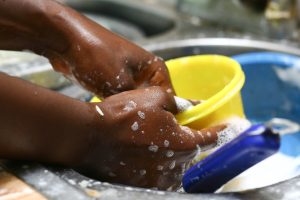
This is one of my favorite steps. Apply soap to the greasy plate and use your fingers to spread the soap evenly all over the plate in an attempt to wash out the oil. Rinse out the soap, if the plate is still greasy, move to the next step.
-
Use Hot Water:
Warm or hot water can be used depending on how oily the plate is. Hot water is mostly used for disposable plastics as these are more difficult to wash out than ceramic or breakable plates. Apply soap to the plate, get the boiled water and pour into the plate. If the plate has a lid, put it on and shake the plate till a soapy foamy lather is formed. If the plate doesn’t have a lid, carefully shake the plate, allowing the hot water to reach all areas of the plate. Do this for about 5 minutes and then rinse off the plates.
-
Pay attention to the Corners:
You thought we were done right? Well, we’re not. Checking the edges and corners to find out if there’s still some residue of oil is paramount. Apply soap once again to the plate and use a sponge to scrub the edges of the plate. Some individuals would have used the sponge in the earlier steps but I’ve discovered that keeping a sponge directly in a very greasy plate makes the sponge wear out faster. This is why I use the sponge after I have washed out a certain amount of oil or even all of the oil from the plate.
-
Rinse with Warm Water:
Finally, rinse with warm water. Ensure to rinse off all the soap residue. Feel the plate with your fingers to ensure that there is no greatness left.
-
Air Dry/ Towel Dry:

Depending on your preference, you can either air dry or towel dry and then store the plates properly.
